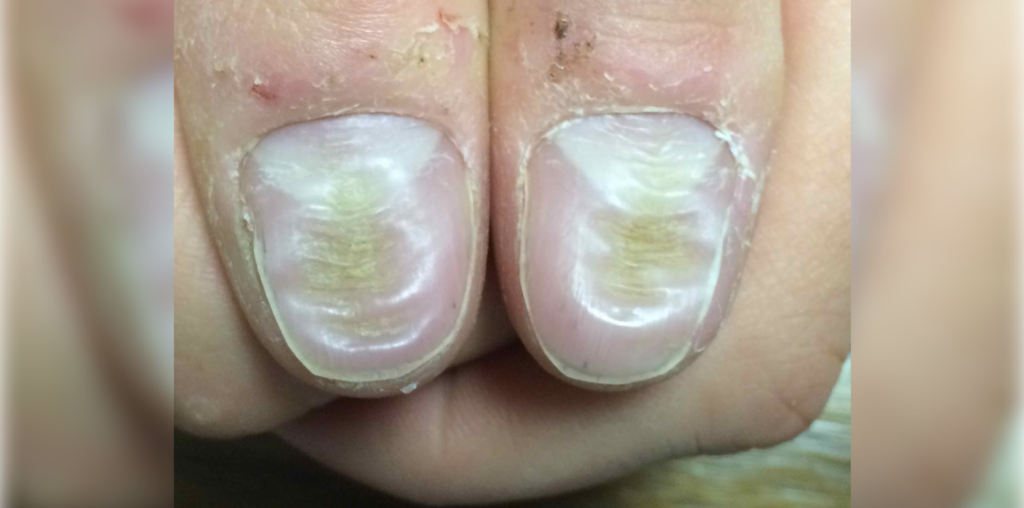
An 8-year-old presents with one year of progressive nail changes. According to the child’s parent, the child is often anxious and frequently observed to be picking at their fingernails.
There are central depressions with longitudinal grooves along the thumbnails. This clinical entity is known as median nail dystrophy. It is associated with habit-tic deformity, caused by repetitive and often unconscious manipulation of the proximal nail fold/cuticle.
Median nail dystrophy is a change in the nail plate at the midline with a longitudinal furrow or split and horizontal ridges that can resemble a fir tree.
Habit-tic deformity is a form of nail dystrophy prompted by frequent external trauma, such as biting the nail, to the nail matrix. It often presents with a central depression and extended, parallel ridging running the full length of the nail.
Treatment is often targeted toward barrier protection and addressing any underlying anxiety or obsessive-compulsive behaviors. Cessation of nail trauma may result in improvement.
Further Reading
- Figure 1 Medical Case
- Habit-tic Deformity
- Median Nail Dystrophy and Habit Tic Deformity: Are They Different Forms of the Same Disorder?
References
- Perrin AJ, Lam JM. Habit-tic deformity. CMAJ. 2014 Mar 18;186(5):371. doi: 10.1503/cmaj.121942. Epub 2013 Sep 16. PMID: 24043663; PMCID: PMC3956568.
- Griego RD, Orengo IF, Scher RK. Median nail dystrophy and habit tic deformity: are they different forms of the same disorder? Int J Dermatol. 1995 Nov;34(11):799-800. doi: 10.1111/j.1365-4362.1995.tb04402.x. PMID: 8543416.
Want more clinical cases?
Join Figure 1 for free and start securely collaborating with other verified healthcare professionals on more than 100,000 real-world medical cases just like this one.